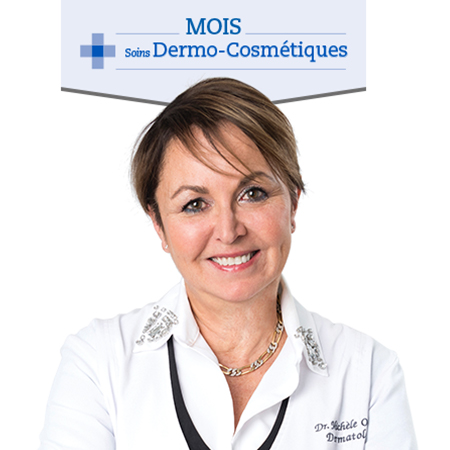Dorys from Lévis asks: I am 57 years old. Besides sunscreen, what are the best products to use for my (normal) skin to age smoothly ... and not too fast? I do a lot of outdoor activities and have taken care of my skin since I was young.
Products that you can use to improve the texture of your skin and give it more radiance are those containing active ingredients such as antioxidants (vitamins A, C and E), ceramides, shea butter, hyaluronic acid, glycolic acid and retinol. I suggest using a serum every day with your regular cream: this concentrate of powerful active ingredients stimulates the production of collagen, thus promoting the tone of the skin.
You do well to protect yourself from the sun. Rays, including those in tanning salons, create a marked deterioration of the skin. This is the main cause of aging: wrinkles are more numerous and deeper, brown spots appear, then the skin’s collagen and elastic fibres are damaged. This results in a loss of firmness and a withered appearance.
Obviously, to keep skin younger, longer, it is essential to maintain healthy lifestyle habits.
Your cosmetician suggests…
Anne-Marie from Montreal asks: what treatment should I choose for the fine lines around my mouth? I have a hard time finding a lipstick since these fine lines appeared.
Fine lines around the lips are more common in smokers, but also in people who tend to pinch their lips frequently – because of the way they form words, for example.
When fine lines cross the edge of the lip, called vermilion, the lipstick can get trapped and run. Makeup artist Virginie Vandelac offers advice to correct this problem here.
Products containing hyaluronic acid products can also help replenish the vermilion and give the lip a smoother appearance.
Your cosmetician suggests…
Francine from Quebec asks: what can I do about the very dark circles under my eyes? I have tried several methods and I am desperate.
To help reduce pigmentation in the lower eyelids, I recommend products rich in antioxidants, vitamin C in particular. I could also recommend products with retinol depending on the tolerance of the skin, which is fragile in this area.
There are also good makeup products to hide the dark circles. This is discussed at the 17th minute of the Facebook Live discussion in which I participated with Virginie Vandelac; you can watch that video below (in French only).
Your cosmetician suggests…
Chantal from Terrebonne asks: I am 53 years old. Since I entered menopause, my skin is no longer the same: it is increasingly dry and less and less dense. I also have more pronounced dark circles. What can I do to correct this problem?
The hormonal upheavals associated with menopause affect women in many ways, and the skin is not spared. A decrease in estrogen levels reduces production of collagen and elastic fibres. The skin becomes thinner, less firm, and drier.
As I pointed out above, using sunscreen helps prevent premature aging. Creams containing shea butter or ceramides can increase skin hydration, and active ingredients such as glycolic acid, work against fine lines and lack of radiance. Regarding dark circles, I invite you to read my previous answer.
Your cosmetician suggests…
Before starting any treatment, remember that the use of sunscreen is essential to treat the skin effectively and to prevent the spots from reappearing.
In addition, ingredients found in some topical products can help to reduce the spots. This is the case of glycolic acid, vitamin C, antioxidants and retinoic acid, derived from vitamin A.
However, you must be patient. There are other therapeutic options: you can discuss them with a health professional.
Your cosmetician suggests…
Maxime from Drummondville asks: the older I get, the more brown spots I have, especially on my hands. Is this normal?
Brown spots, sometimes called sun spots, are not related to age, but are caused by a disorder of skin pigment cells. Under the effect of exposure to sunlight or a hormonal change, these cells start to produce too much melanin (brown pigment).
The spots are most often located in areas that have been most frequently exposed to the sun. It is therefore not surprising that they are found more often on the face, neckline and back of the hands.
Your cosmetician suggests…






